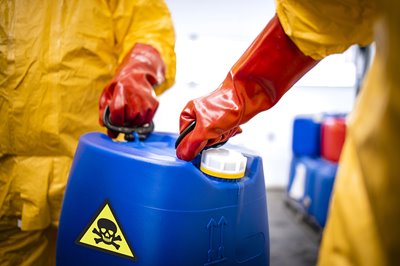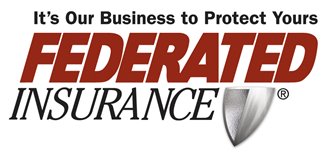 Article content provided by Federated Insurance.
Article content provided by Federated Insurance.
If your organization produces, transports, and uses hazardous chemicals, it is important to train employees to interact with these substances safely because failing to use and store hazardous chemicals correctly could lead to dangerous health side effects or even contribute to a workplace fire.
According to OSHA, all employees should have access to and training on Safety Data Sheets (SDS), a comprehensive hazard communication (HazCom) safety program, and all chemicals must be labeled.1
Brush up on your HazCom knowledge by answering the questions below.
How are hazardous chemicals classified?
A hazardous chemical is anything that poses a health, safety, or environmental risk. Health hazards include chemicals that can cause everything from mild skin irritation to cancer. Safety hazards include chemicals that can explode or ignite, and environmental hazards include water pollution and ecosystem disruption.
Should I have labels on hazardous chemicals at my business?
Yes. Hazardous chemical manufacturers, distributors, and importers are required to provide labels. These labels should feature the product name or number, supplier information, a signal word (e.g., Danger), pictogram, hazard statement, and precautionary statement.
What are Safety Data Sheets (SDS)?
A safety data sheet includes 16 sections detailing the properties of a chemical, its hazards, protective measures, and safety precautions for handling and storing.
What are other HazCom best practices?
- Implement a written safety program that is available to all employees.
- Annually, train all workers on any new label elements and SDS formats.
- Review chemicals stored at your workplace on an annual basis.
- Keep physical copies of SDS’ in close proximity to where the chemicals are stored.
For more information and helpful resources on hazard communication, reach out to your local Federated® marketing representative.
1. https://www.osha.gov/hazcom Hazard Communication. Accessed 6/14/23.
Visit the SMACNA association page for more on the products and services Federated Insurance offers, and to locate your local marketing representative and association account executive.
This article is for general information and risk prevention only and should not be considered legal or other expert advice. The recommendations herein may help reduce, but are not guaranteed to eliminate, any or all risk of loss. The information herein may be subject to, and is not a substitute for, any laws or regulations that may apply. Qualified counsel should be sought with questions specific to your circumstances. ©2023 Federated Mutual Insurance Company.
